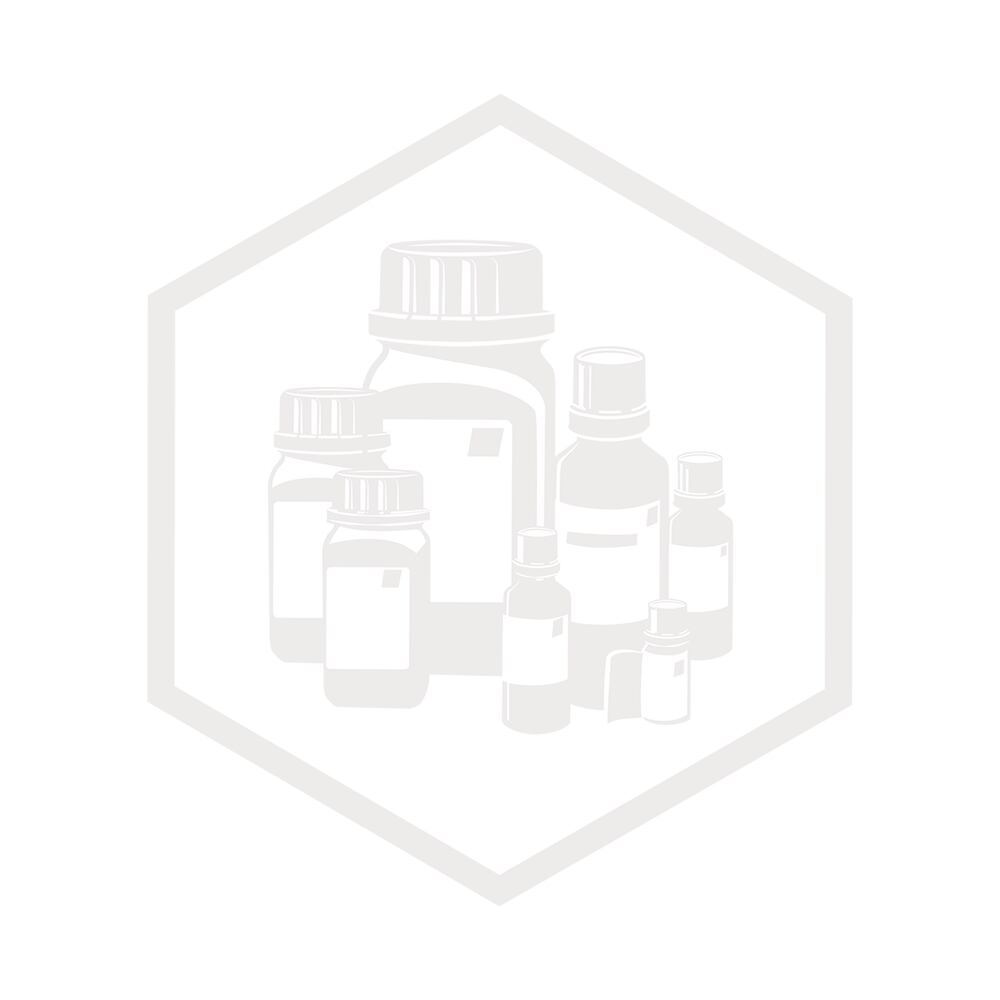Technical Data Sheet
Copper(II) sulphate, 250 g
Molar mass (M) 159,60 g/mol
Density (D) 3,6 g/cm³
ADR 9 III
WGK 3
CAS No. 7758-98-7
EG-Nr. 231-847-6
UN-Nr. 3077
€30.00/Pack Qty.
excl. VAT. | 250 g per Pack Qty.
Art. No. CP86.1
Product details
Copper(II) sulphate ≥99 %, Ph. Eur., anhydrous
| Checked according to pharmacopoeia | Ph. Eur. |
| Suitable (as desiccant) for | Low fatty acids, alcohols, ester |
| Not suitable (as desiccant) for | Amines, nitriles, ammonia |
| Regeneration | Above 50 °C under vacuum |
- Subtotal: 0.00
| Art. No. | Pack Qty. | Pack. | Price | Quantity | |
|---|---|---|---|---|---|
| CP86.1 | 250 g | plastic |
€30.00 |
|
|
| CP86.2 | 500 g | plastic |
€48.30 |
|
|
| CP86.3 | 1 kg | plastic |
€85.90 |
|
|
| CP86.4 | 2.5 kg | plastic |
€181.70 |
|
|
| CP86.5 | 5 kg | plastic |
€342.95 |
|
|
| CP86.7 | 25 kg | plastic |
€1,596.40 |
|
|
|
In stock
Available
In procurement
No longer available
Delivery date currently unknown
|
|||||
- Subtotal: 0.00
Downloads / MSDS
General information
Desiccants can absorb water and bind it chemically (reversibly or irreversibly) or physically. The main desiccants can be subdivided into four categories:
- non-renewable chemical desiccants
- renewable chemical desiccants
- silica gels
- molecular sieves
| Solvent | Molecular sieve |
Potassium carbonate |
Calcium chloride |
Phosphous pentoxide |
| Acetic acid | - | - | - | + |
| Acetic acid anhydride | - | - | + | - |
| Acetic acid ethyl ester | 4 Å | + | - | + |
| Acetic acid methyl ester | 4 Å | + | - | + |
| Acetone | 3 Å | + | + | - |
| Acetonitrile | 3 Å | + | + | + |
| Benzene | 4 Å | - | + | - |
| 1-Butanol | - | + | - | - |
| 2-Butanol | - | + | - | - |
| 1-Butanone | - | + | + | - |
| Chloroform | 4 Å | - | + | + |
| Cyclohexane | 4 Å | - | - | - |
| Dichloremethane | 4 Å | - | - | - |
| Diethylether | 4 Å | - | + | - |
| Diisopropyl ether | 4 Å | - | + | - |
| Dimethyl formamide | 4 Å | - | - | - |
| Dioxan | 4 Å | - | + | - |
| Ethanol | 3 Å | - | - | - |
| Ethyle formate | - | - | + | - |
| n-Hexane | 4 Å | - | - | - |
| Methanol | 3 Å | - | + | - |
| 2-Propanol | 3 Å | - | - | - |
| Pyridine | 4 Å | - | - | - |
| Tetrahydrofurane | 4 Å | - | + | - |
| Toluene | 4 Å | - | + | - |
| Trichloroethylene | - | + | - | - |
| Xylene (Isomer compound) | 4 Å | - | + | - |
Certificates of Analysis
Guarantee analysis
| Assay (iodom., dry substance) | 99.0-101.0 % |
| Identity | complies |
| Appearance of solution | complies |
| Chloride (Cl) | ≤0.015 % |
| Iron (Fe) | ≤0.015 % |
| Lead (Pb) | ≤0.0005 % |
| Loss on drying (250 °C) | ≤1.0 % |

